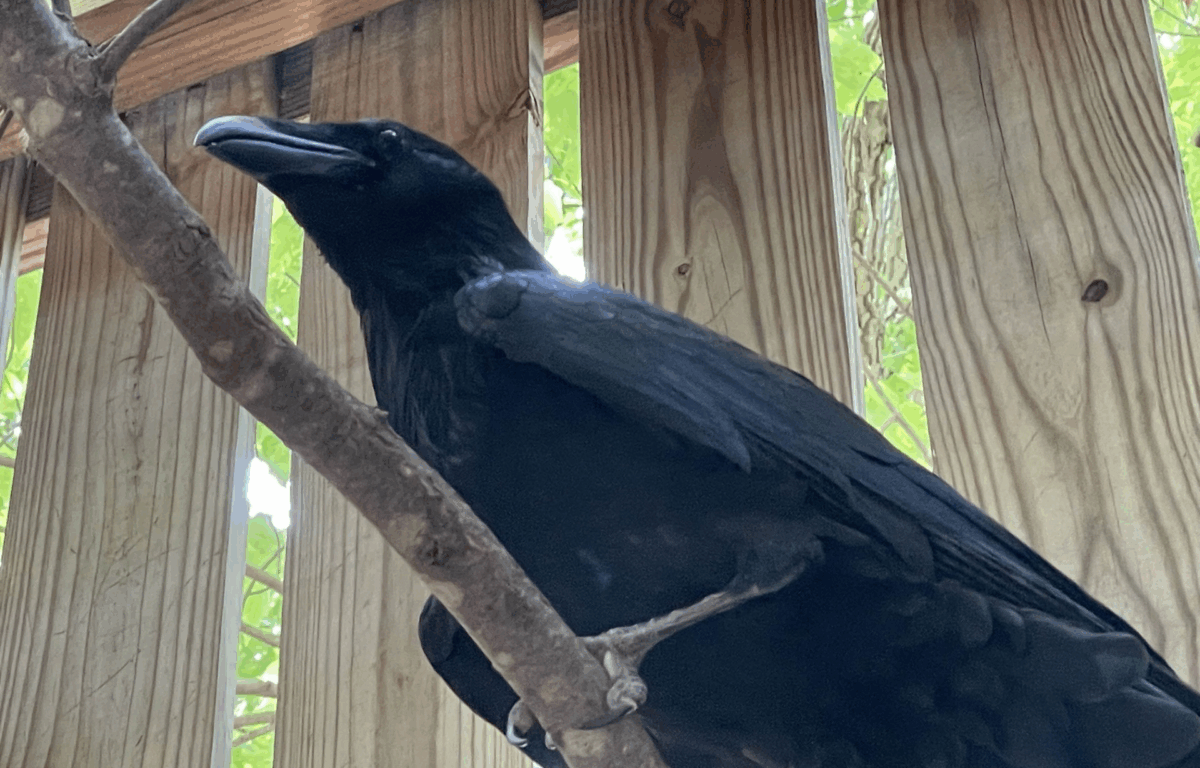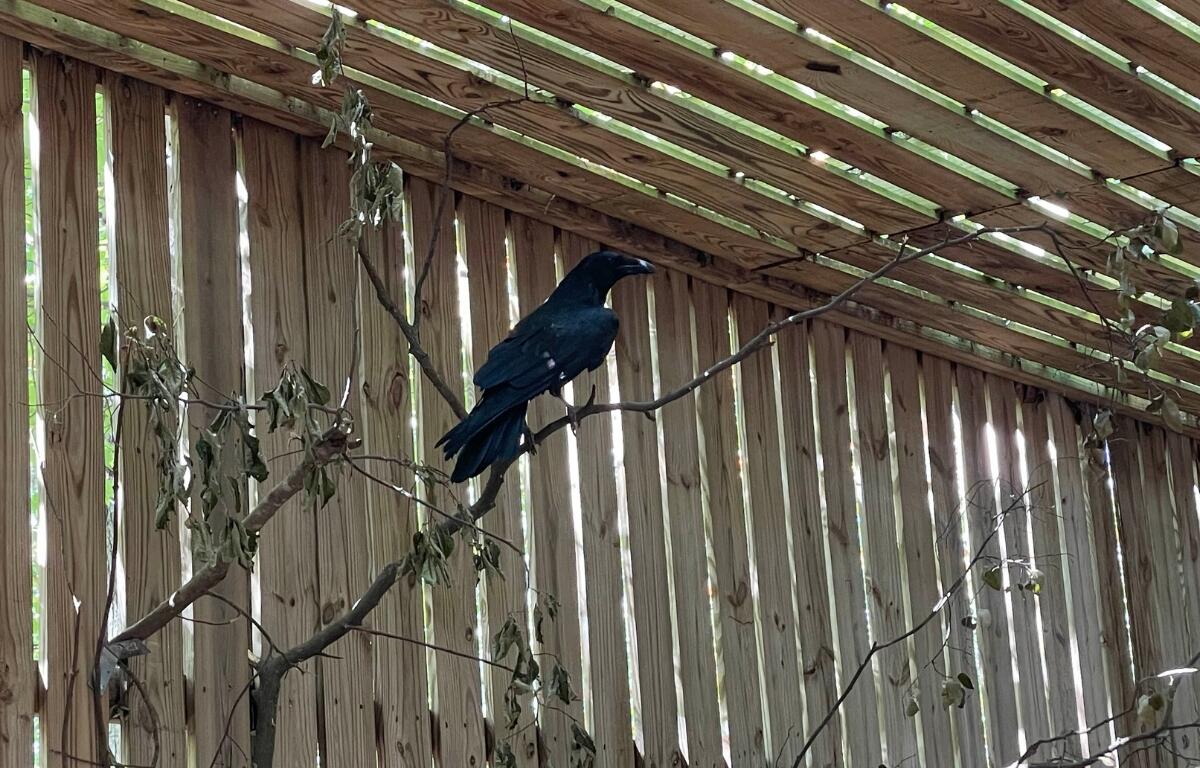WAYNESBORO, VA (Rocktown Now) — On June 21, 2024, the Wildlife Center admitted a raven that had been injured in a wildfire in Clarke County. Now, more than one year later, this raven is nearly ready for release, and you can watch the final days of his rehabilitation live on the Center’s Critter Cams as he prepares for life back in the wild.
The raven’s recovery began in 2024, when the bird was first brought to the Center. Upon examination, veterinary staff quickly recognized the severity of the raven’s condition: the bird’s tail feathers were singed and broken, and he had lost a significant number of feathers from both wings, rendering him unable to fly. Fortunately, the raven had avoided serious burn wounds, but his recovery would still be long and complex.

“Feathers can take a long time to grow back. Given the extent of the damage, we knew the raven would be a long-term patient,” said Dr. Miranda Bridges, a veterinarian at the Center.
Typically, the Center uses a process called imping—attaching donor feathers—to help birds like this raven regain flight more quickly. However, in this case, staff didn’t have any suitable raven feathers available. Instead, they turned to an alternative approach: thyroid hormone therapy.
“Research on penguins has shown that beef thyroid hormone can induce molting and significantly accelerate feather growth,” explained Wildlife Rehabilitation Supervisor Alex Olvera. “We decided to try that same approach.”
While the treatment wasn’t as effective in this raven as it has been in penguins, it did trigger molting and helped speed up feather regrowth—just not as much as the team had hoped.
As the raven’s feathers slowly grew back, the team faced another challenge: keeping the raven mentally engaged. Ravens possess remarkable intelligence, comparable to that of a seven-year-old child. Without adequate enrichment, they can develop stress-related behaviors, including damaging their own feathers—something that could hinder the raven’s progress.
To prevent this, staff provided daily enrichment activities to keep the raven busy.
“He always enjoys the enrichment we give him, especially objects he can pick up and move,” said Alex. “We’ve even noticed he has a favorite stick he likes to carry around, and he’ll stash acorns in piles of leaves like he’s hiding treasure. He’s always up to something.”

The team’s dedication and patience paid off, and after 14 months of care, the raven is finally nearing release. The raven will receive a final exam with the veterinary team on September 13, and if everything looks good, he will be cleared to return to the wild.
For more information about the Center, and to watch the raven on their Critter Cams, visit wildlifecenter.org




